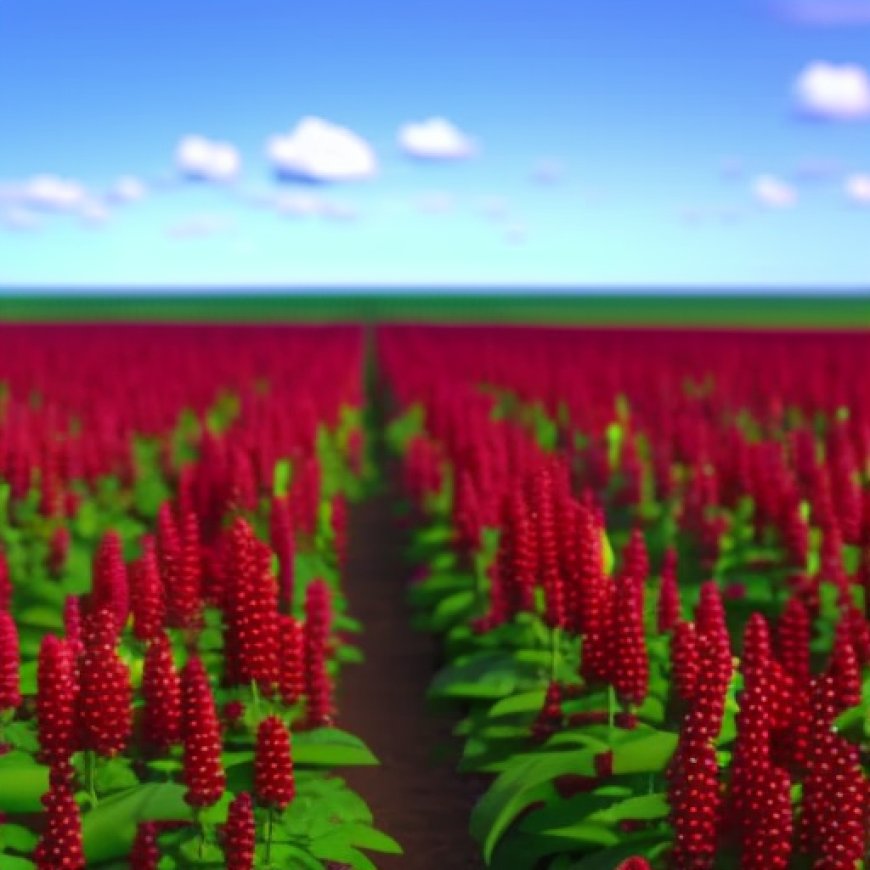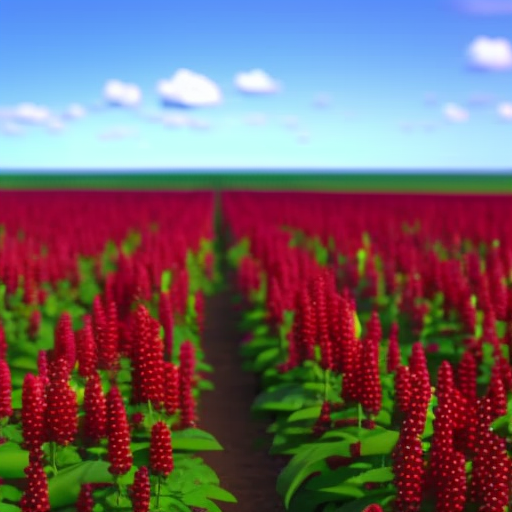Gene editing crops to be colourful could aid weeding, say scientists
Gene editing crops to be colourful could aid weeding, say scientists The Guardian


Genetically Engineered Crops Can Help Farmers Produce Food Without Pesticides

Scientists have stated that genetically engineering crops to be colorful could assist farmers in producing food without the need for pesticides. This is because it would make it easier to identify and remove weeds. The authors of a report published in the journal Trends in Plant Science argue that this will become increasingly important as climate-resistant “weeds” are cultivated for food in the future.
Enhancing Visual Recognition of Crops
The lead author of the report, Michael Palmgren, a plant scientist from the University of Copenhagen, explains that distinguishing new crops from weeds is challenging. Therefore, finding a way to differentiate them is crucial. The paper suggests altering the genomes of crops to express pigments such as anthocyanins (which give blueberries their color) or carotenoids (which make carrots orange).
Example of Fat Hen
Palmgren provides an example of fat hen (Chenopodium album), a weed that is grown for its nutritious seeds in India and Nepal and was a food source in Europe during the Iron Age. Fat hen is now a robust and competitive weed in European fields, causing significant crop losses. Palmgren suggests improving fat hen to make it a new sustainable crop that requires less care. However, distinguishing the improved fat hen from the wild, weedy fat hen becomes a challenge as they are the same species and changes may only be observable after seed development.
Utilizing Genetic Engineering for Weed Control
Genetic science has identified the genes responsible for desirable traits in crop plants, allowing for the rapid breeding of new crops with these traits using genetic engineering. Breeding wild plants, which are more tolerant to extreme weather and climate-related impacts, could help prevent food shortages caused by climate change. However, these new crops may resemble weeds, making it difficult to distinguish them. To address this issue, scientists propose creating visually distinctive plants that can be easily differentiated from weeds by robot weeders.
Sustainable Development Goals (SDGs)
- SDG 2: Zero Hunger – Genetically engineered crops can contribute to achieving zero hunger by increasing food production without the need for pesticides.
- SDG 13: Climate Action – Breeding climate-resistant crops can help mitigate the impacts of climate change on food production.
- SDG 15: Life on Land – Developing sustainable crops and controlling weeds can promote biodiversity and protect ecosystems.
SDGs, Targets, and Indicators
1. Which SDGs are addressed or connected to the issues highlighted in the article?
- SDG 2: Zero Hunger
- SDG 12: Responsible Consumption and Production
- SDG 13: Climate Action
- SDG 15: Life on Land
2. What specific targets under those SDGs can be identified based on the article’s content?
- SDG 2.4: By 2030, ensure sustainable food production systems and implement resilient agricultural practices that increase productivity and production, that help maintain ecosystems, that strengthen capacity for adaptation to climate change, extreme weather, drought, flooding, and other disasters, and that progressively improve land and soil quality.
- SDG 12.4: By 2020, achieve the environmentally sound management of chemicals and all wastes throughout their life cycle, in accordance with agreed international frameworks, and significantly reduce their release to air, water, and soil in order to minimize their adverse impacts on human health and the environment.
- SDG 13.3: Improve education, awareness-raising, and human and institutional capacity on climate change mitigation, adaptation, impact reduction, and early warning.
- SDG 15.5: Take urgent and significant action to reduce the degradation of natural habitats, halt the loss of biodiversity, and protect and prevent the extinction of threatened species.
3. Are there any indicators mentioned or implied in the article that can be used to measure progress towards the identified targets?
- Indicator for SDG 2.4: Adoption of sustainable agricultural practices, including precision agriculture and agroecology.
- Indicator for SDG 12.4: Reduction in the use of pesticides and other harmful chemicals in agriculture.
- Indicator for SDG 13.3: Increase in the number of educational programs and initiatives on climate change adaptation and mitigation.
- Indicator for SDG 15.5: Increase in the protection of natural habitats and the conservation of threatened species.
SDGs, Targets, and Indicators
| SDGs | Targets | Indicators |
|---|---|---|
| SDG 2: Zero Hunger | 2.4: By 2030, ensure sustainable food production systems and implement resilient agricultural practices that increase productivity and production, that help maintain ecosystems, that strengthen capacity for adaptation to climate change, extreme weather, drought, flooding, and other disasters, and that progressively improve land and soil quality. | Adoption of sustainable agricultural practices, including precision agriculture and agroecology. |
| SDG 12: Responsible Consumption and Production | 12.4: By 2020, achieve the environmentally sound management of chemicals and all wastes throughout their life cycle, in accordance with agreed international frameworks, and significantly reduce their release to air, water, and soil in order to minimize their adverse impacts on human health and the environment. | Reduction in the use of pesticides and other harmful chemicals in agriculture. |
| SDG 13: Climate Action | 13.3: Improve education, awareness-raising, and human and institutional capacity on climate change mitigation, adaptation, impact reduction, and early warning. | Increase in the number of educational programs and initiatives on climate change adaptation and mitigation. |
| SDG 15: Life on Land | 15.5: Take urgent and significant action to reduce the degradation of natural habitats, halt the loss of biodiversity, and protect and prevent the extinction of threatened species. | Increase in the protection of natural habitats and the conservation of threatened species. |
Behold! This splendid article springs forth from the wellspring of knowledge, shaped by a wondrous proprietary AI technology that delved into a vast ocean of data, illuminating the path towards the Sustainable Development Goals. Remember that all rights are reserved by SDG Investors LLC, empowering us to champion progress together.
Source: theguardian.com

Join us, as fellow seekers of change, on a transformative journey at https://sdgtalks.ai/welcome, where you can become a member and actively contribute to shaping a brighter future.







